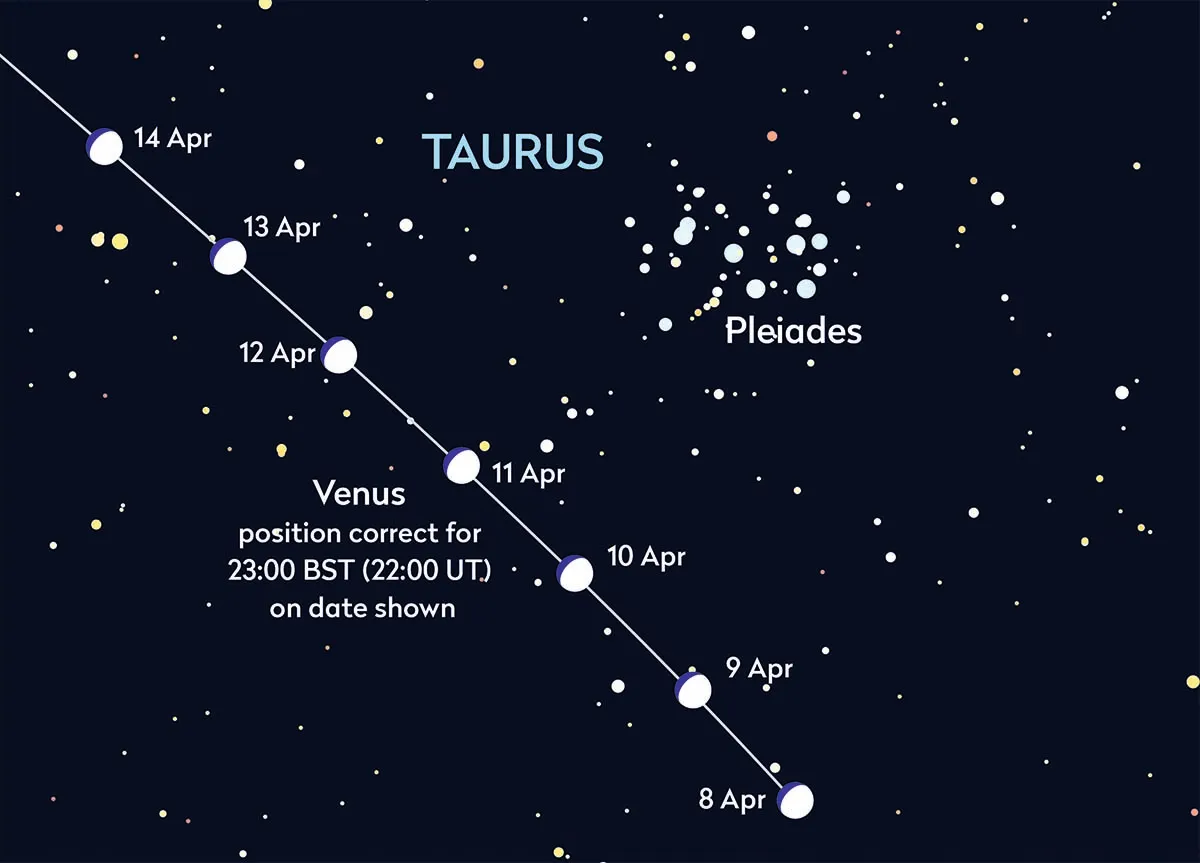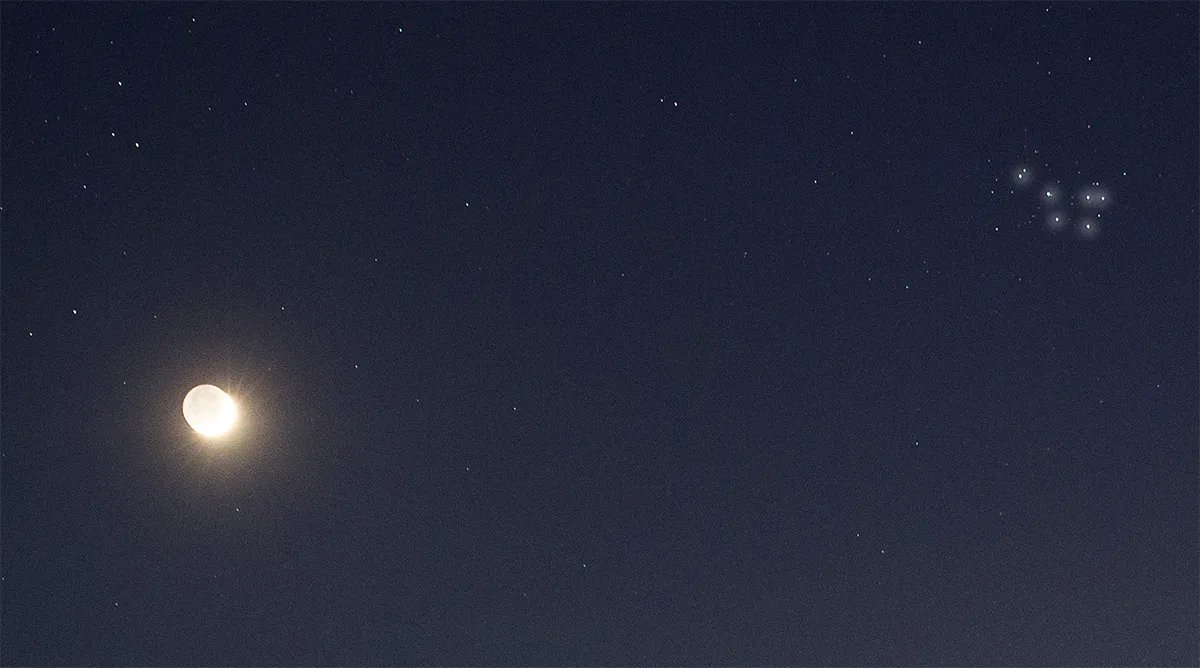As something of a stargazing treat for the long Easter weekend, Venus will begin to pass south of the Pleiades open star cluster over the next few nights.
If you keep track of Venus and the Pleiades between 8 - 14 April, you'll be able to see the planet's position relative to the star cluster change night after night, making for a nice night-sky conjunction and a great opportunity for a spot of astrophotography.
Later in April there will be another chance to see a Pleiades conjunction: this time it will be the crescent Moon's turn to join the star cluster in the night sky.
Read on to find out when is the best time to see the Venus-Pleiades conjunction and the Moon-Pleiades conjunction, and which dates see closest approach.
For weekly stargazing advice delivered directly to your inbox, sign up to receive the BBC Sky at Night Magazine e-newsletter.

Venus-Pleiades conjunction
Venus passes south of the Pleiades during April, creating an opportunity to take a stunning photograph of the bright planet and beautiful open cluster.
The best time to see the Venus-Pleiades conjunction is on the evenings of 8–14 April.
Their closest approach occurs on the evenings of 10 and 11 April, when Venus passes 2.7° south of the cluster’s centre.
Although the evening twilight expands rapidly throughout April, it should still be possible to see the closest part of this encounter against dark skies, the pair appearing over 10° above the west-northwest horizon.
Moon-Pleiades conjunction

The Pleiades is visited by a thin waxing crescent Moon on the evenings of 21 and 22 April.
On 21 April, the 3%-lit waxing crescent Moon sits 8.7° below and slightly to the right of the Pleiades as seen from the UK.
On the evening of 22 April, the now 8%-lit waxing crescent Moon sits 5.8° east (left and slightly up as seen from the UK) of the cluster’s stars.
During the day on 23 April, the 12%-lit waxing crescent Moon is located 44 arcminutes north of mag. –4.0 Venus, making this a great time to try to find the pair during daylight hours.
Their closest approach is around 13:00 BST (12:00 UT), when the pair will be approximately 50° up, above the east-southeast horizon.
Although separated from the Sun by just over 40° at this time, great care must be taken to avoid looking at the Sun, either with the naked eye or through widefield instruments such as binoculars.
The best and safest strategy is to place the Sun behind something opaque – in other words to stand in the shadow of a building or fence so you can’t see the Sun at all – leaving the area of sky to the left of the Sun in view.
Find out what else is in the night sky this month
If you do manage to photograph Venus and the Pleiades or the Moon and the Pleiades, don't forget to send us your images.
This guide originally appeared in the April 2023 issue of BBC Sky at Night Magazine.
